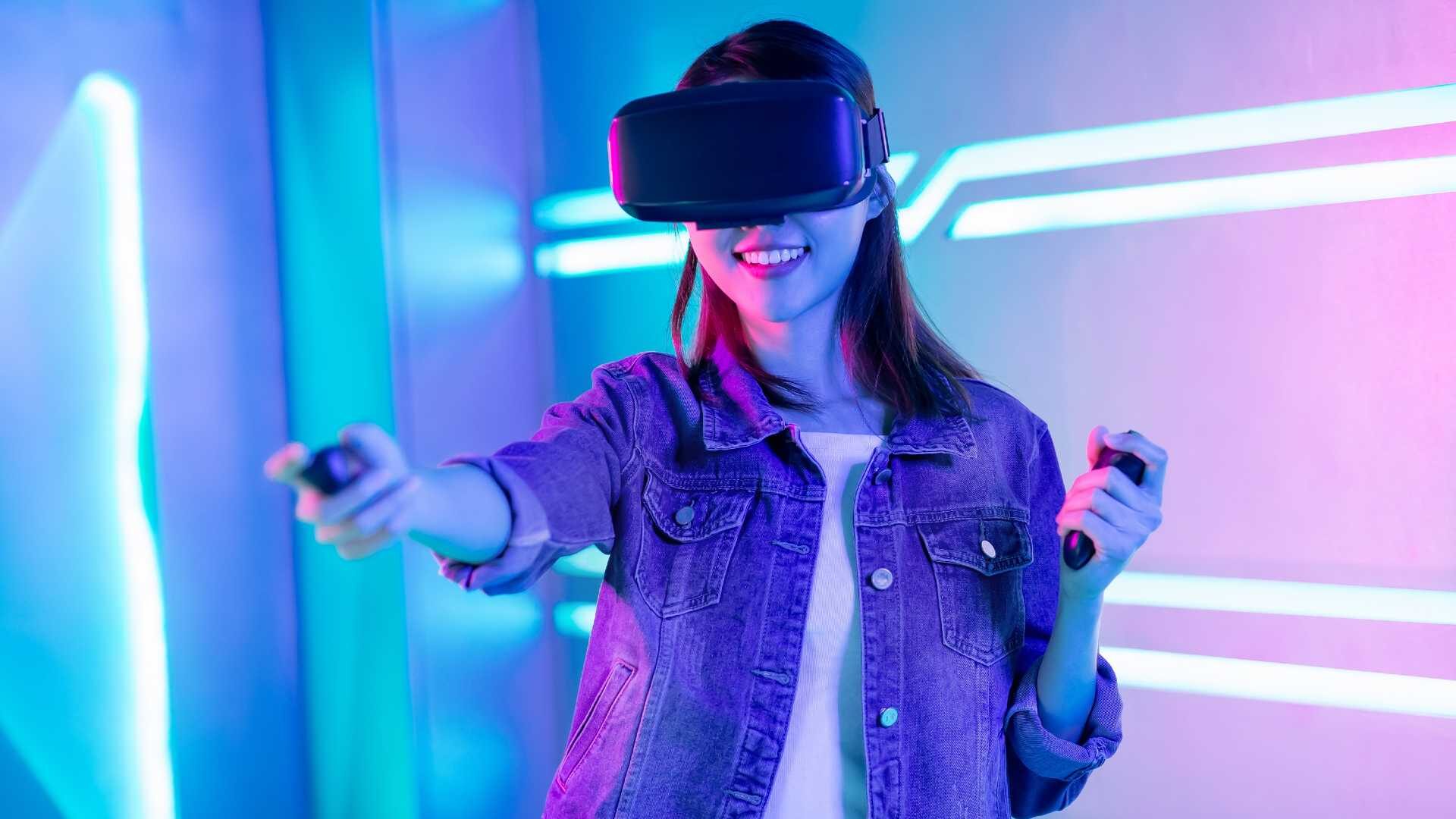A breakthrough new generation of mobile virtual reality (VR) hit the shelves in the very shadow of the pandemic. Now, learners can roam freely in VR simulations using only a standalone headset, with no computers to bump into or cords to trip over. Now, the magic of VR for critical skills training can finally be deployed on headsets that cost less than an airline flight to locations that were once remote and inconvenient.
Meanwhile, the bleeding-edge, real-time game engines that render Hollywood-quality special effects and the massive hit videogames are now available to power these high-fidelity corporate training simulations. There has never been a time in the modern age when the most advanced VR production technology was so available — and so affordable — to learning organizations.
Fostering Presence
VR is a transformative technology because it engulfs the senses and fosters of “presence.” The brain treats the VR experience as a real one and takes the user through the frame and into the world. Flat, static Zoom calls and eLearning courses can be replaced by traversable 3D spaces as hyper-realistic performance environments with positional audio and haptic responses that effectively “hack our senses.” In VR, learners experience sensory experiences of touch, vision and sound of such convincing verisimilitude that the brain suspends disbelief and generates a sense of actually being in an actual place: The Holodeck has arrived.
Flight Simulations for Any Skill
VR offers a low-cost, simulation-based skills training based on the flight simulator, which has been the gold standard of procedural training for more than a century. Typically, commercial pilots spend two days in a full-motion simulator every six months practicing emergency procedures; it’s no coincidence we haven’t had a fatal U.S. airline crash in the last 12 years.
The “Miracle on the Hudson” was no miracle: Captain Sullenberger had spent significant time rehearsing simulated water landings that prepared him to famously glide a powerless jet liner into the Hudson River in New York, saving all 155 lives on board. You wouldn’t step on a plane where the pilot learned to fly in classrooms, Zoom sessions or through eLearning courses. Isn’t it time to teach your learners how to better do their jobs in a “flight simulator,” just like pilots?
Success Stories
VR simulations can reduce training costs, improve job performance and boost engagement at scale. Learners at major pharmaceutical companies, such as Pfizer, Novartis and Bristol Myers Squibb, all strap on their VR headsets and feel a complete sense of “presence” in pharmaceutical VR labs. They use their hands to practice life-saving skills. Step-by-step tutorials, guided practice, feedback loops and unlimited re-dos help them hone skills and build mastery. Multiplayer VR simulations add social presence. For instance, an instructor might hand a syringe to a learner standing to her right in the simulated biosafety training environment. In VR, they have a shared sense of space, interacting with each other seamlessly throughout the training.
VR can also be used for manufacturing and construction training. For instance, prospective painters will soon step onto a computer-generated construction site, grab a virtual tape bazooka with both hands and drag it across a drywall seam. At least, that’s how the Finishing Trades Institute is planning to recruit and skill the next generation drywallers and painters.
VR can go beyond replicating reality to extending it: HVAC leader Daikin offers the ultimate customer experience of “X-ray vision” to watch liquid and vapor inside their equipment. Customers and sales reps interact seamlessly in multiplayer VR showrooms of its giant chillers.
These industry leaders are just a few examples of organizations harnessing emerging consumer tech to unlock learning effectiveness.
First Step: Get a Headset
The time to start your VR journey to a successful new business reality is now. If you don’t own a VR headset, you’re already behind. Get the VR headset. Experiencing is believing. Then, pass it around to decision makers in your organization. Hold meetings there. You’re going to be staggered by the feeling of being there with “real” people.
Second Step: Pilot
Next, identify a pilot with measurable outcome that plays to the unique capabilities of VR. The technology’s sweet spot is spatial training involving hands and body for tasks that are too dangerous, expensive, inconvenient or simply impossible to practice in real life. Depending on your program, you might need a team of top-tier 3D graphics artists, animators and programmers to make your vision come to (virtual) reality. Most companies partner with an external VR learning developer for such expertise.
Third Step: Scale
As soon as the pilot has launched successfully, it’s time to identify additional use cases. Develop a roadmap to scale VR across the enterprise, including an infrastructure of device and content management platforms, advanced analytics and learning management system (LMS) reporting. Escaping “pilot purgatory” requires planning with a full rollout in mind from the outset.
Real-time 3D learning programs can be played across VR headsets, mobile device, and PCs alike. VR is here. This is a critical time to reimagine your learning around an assumption of experiential and visceral learning we once could only dream about.








